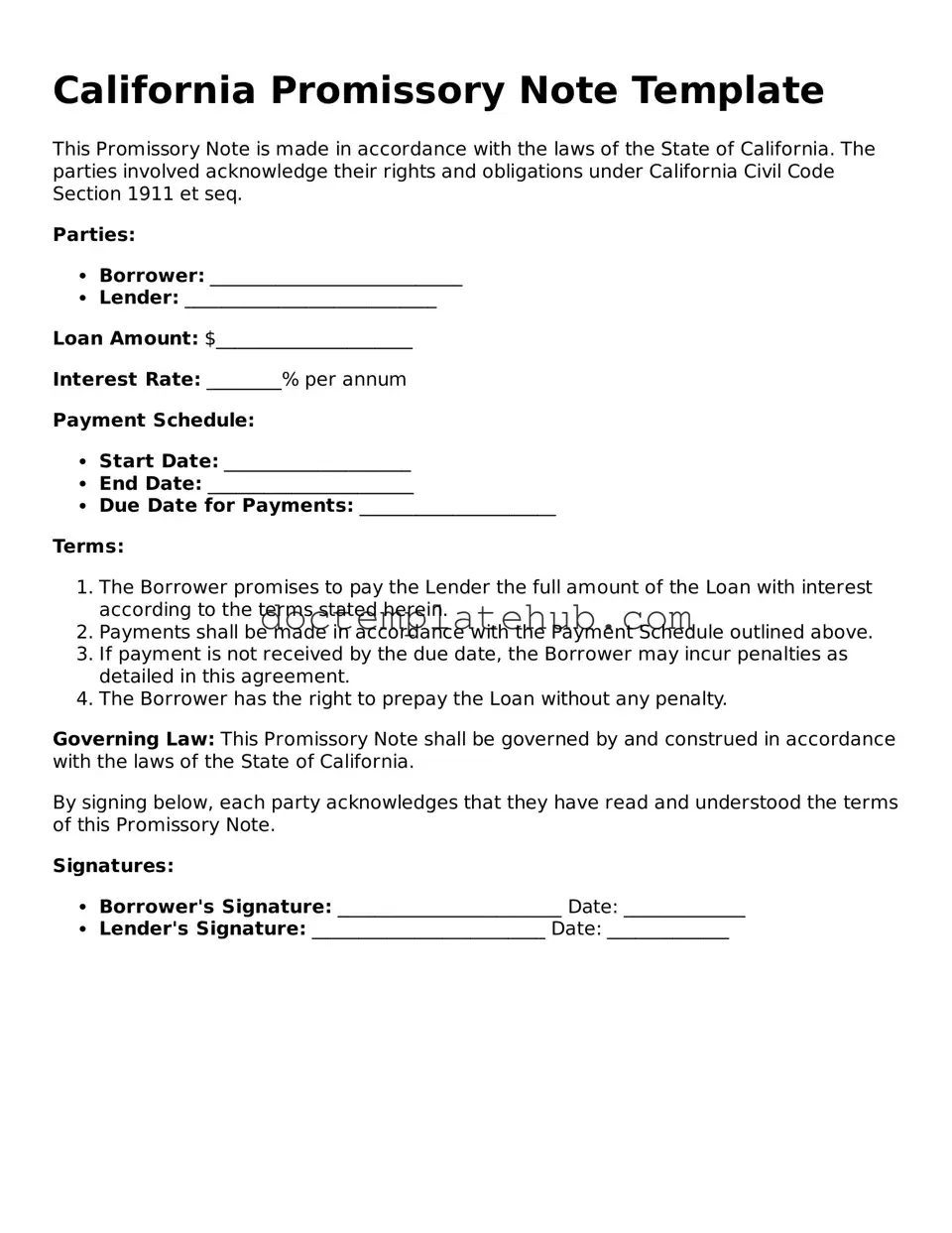What is a California Promissory Note?
A California Promissory Note is a written promise to pay a specified amount of money to a designated party at a specified time or on demand. It serves as a legal document that outlines the terms of a loan or debt agreement between a borrower and a lender. This document can include details such as the interest rate, repayment schedule, and any collateral involved in the transaction.
Who can use a Promissory Note in California?
Anyone can use a Promissory Note in California, provided they are entering into a loan agreement. This includes individuals, businesses, and organizations. It is important for both parties to understand the terms of the note and ensure that it meets legal requirements to be enforceable in court.
What are the key components of a California Promissory Note?
A well-drafted California Promissory Note should include several key components: the names and addresses of the borrower and lender, the principal amount of the loan, the interest rate, repayment terms, and any penalties for late payment. Additionally, it should specify whether the note is secured or unsecured and include any relevant provisions regarding default or acceleration of payment.
Is a Promissory Note legally binding?
Yes, a Promissory Note is legally binding as long as it meets certain requirements. Both parties must agree to the terms, and the note must be signed by the borrower. It is advisable for both parties to keep a copy of the signed document for their records. If disputes arise, the note can be used as evidence in court.
Can a Promissory Note be modified after it is signed?
Yes, a Promissory Note can be modified after it is signed, but both parties must agree to the changes. It is best practice to document any modifications in writing and have both parties sign the amended note. This helps to avoid misunderstandings and ensures that all parties are aware of the new terms.
